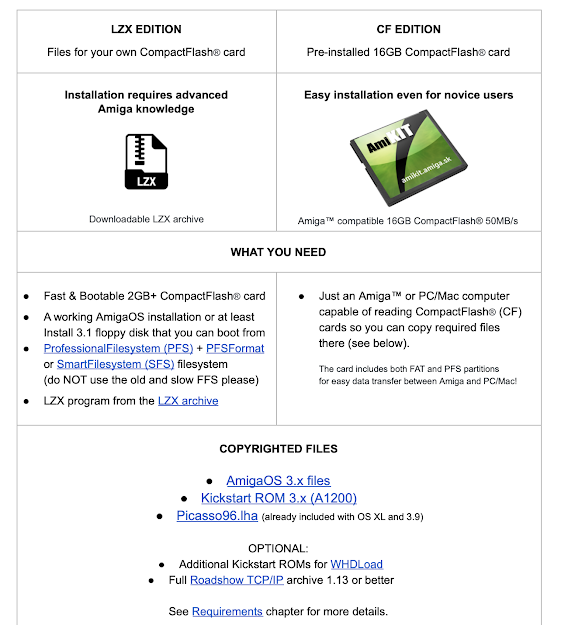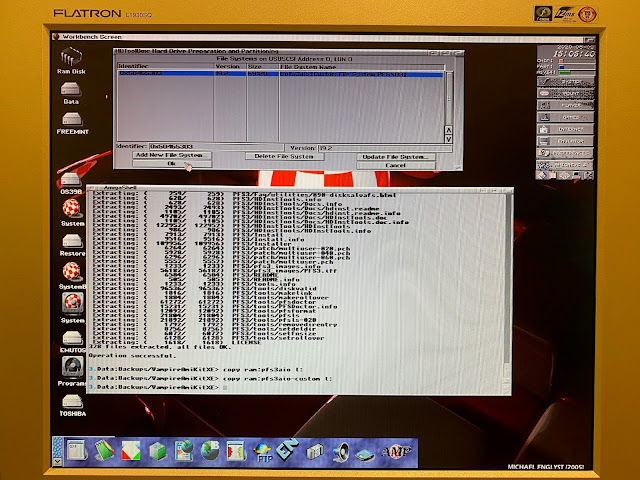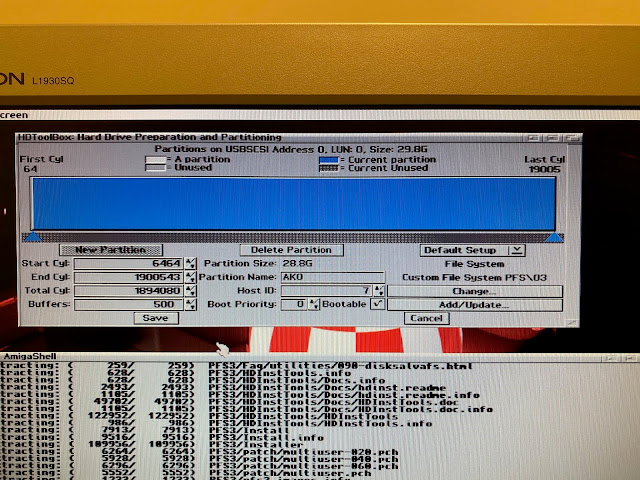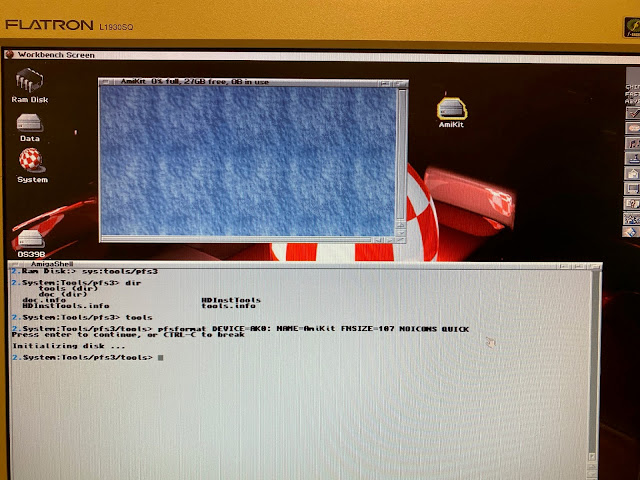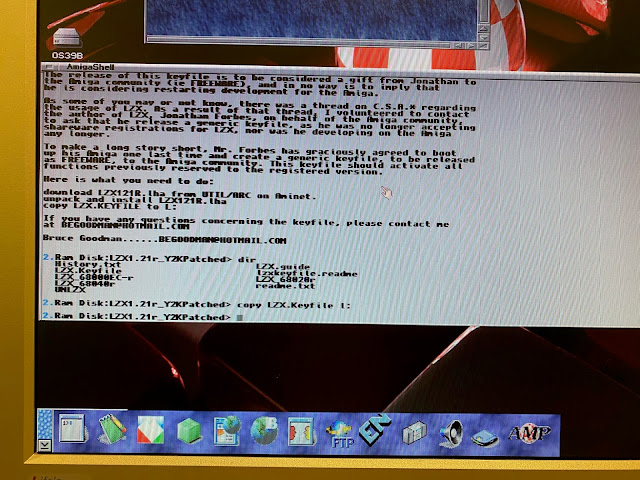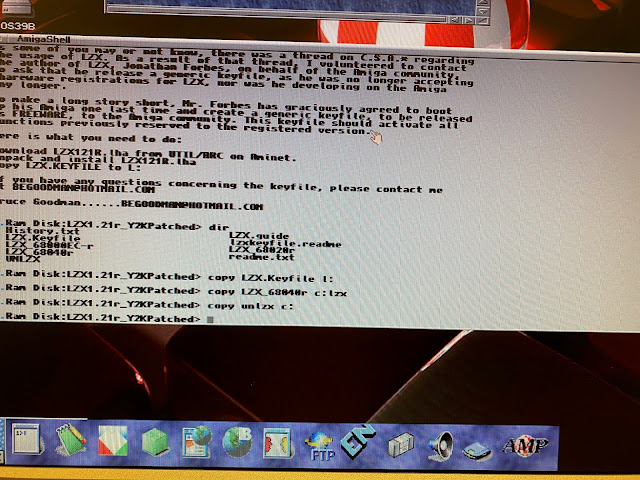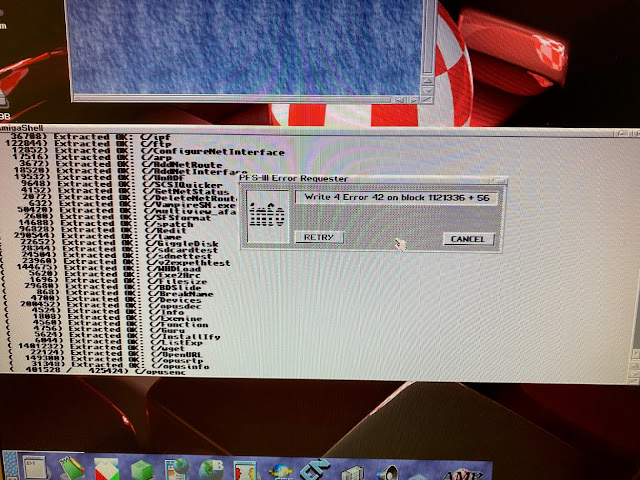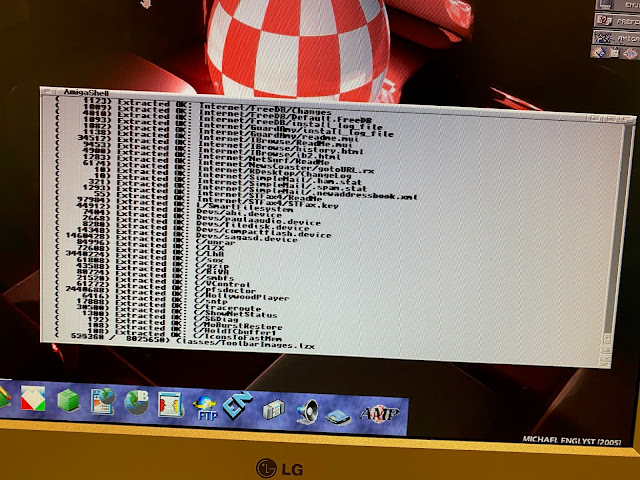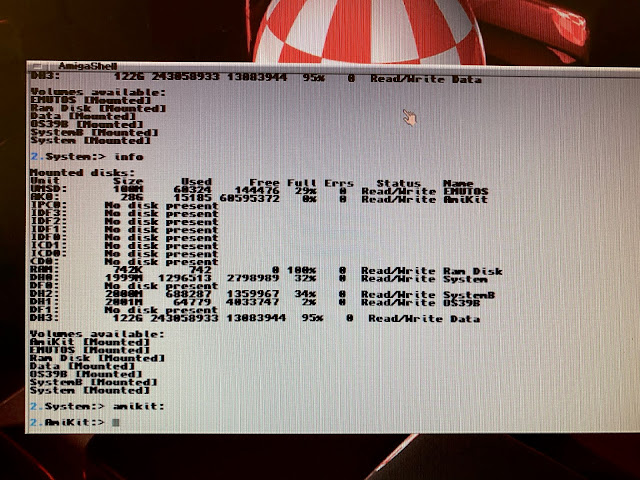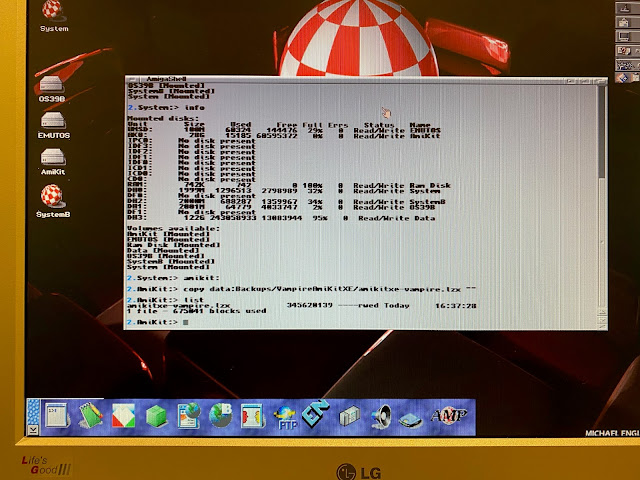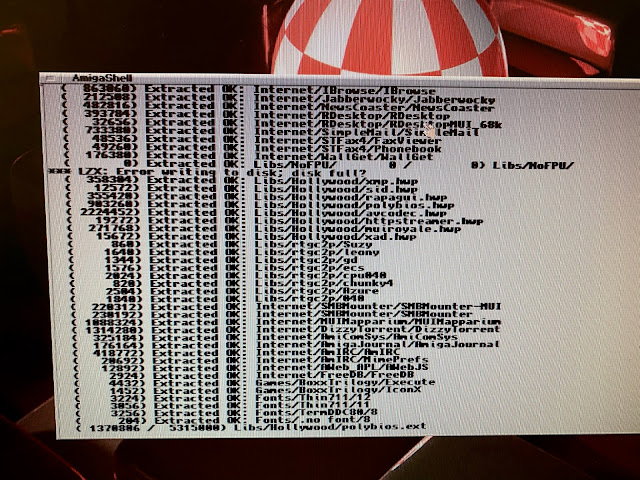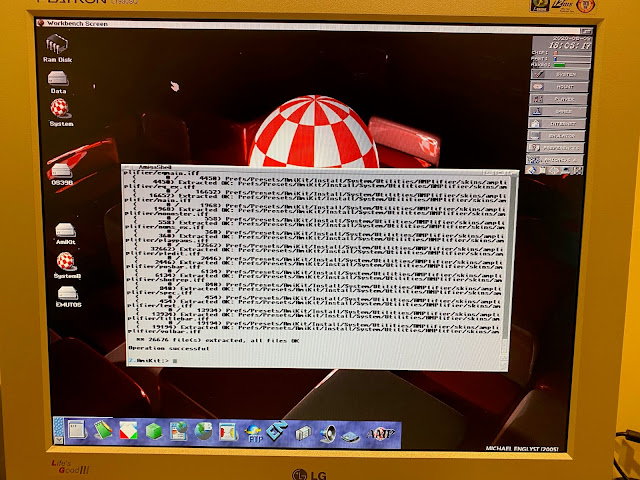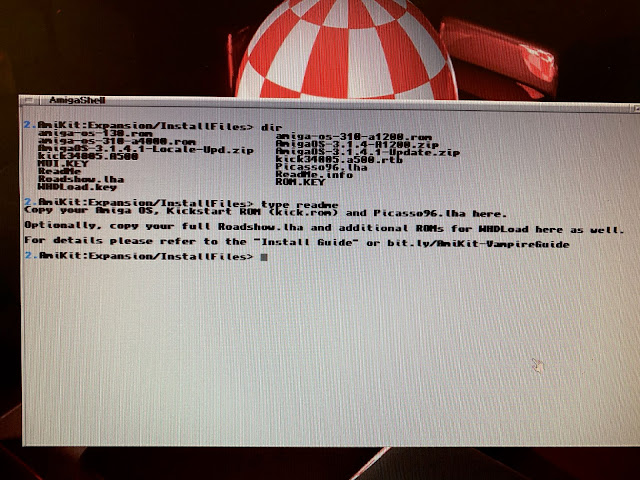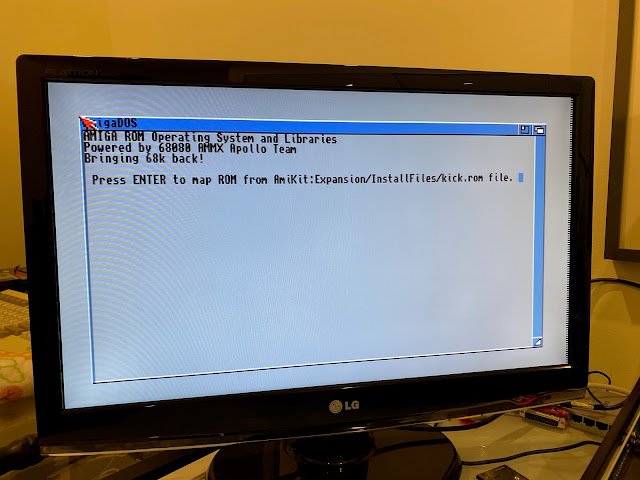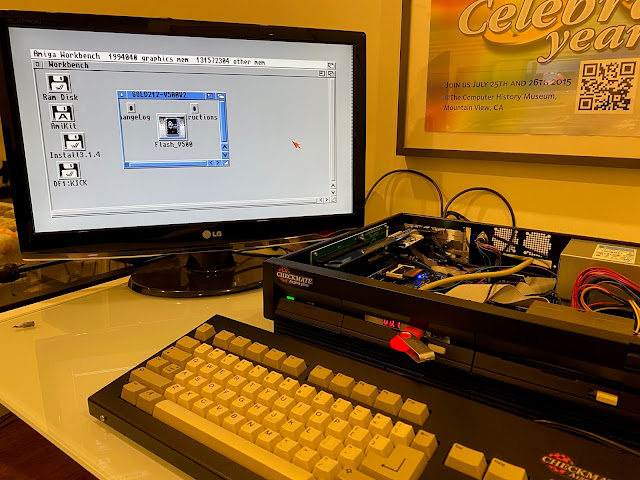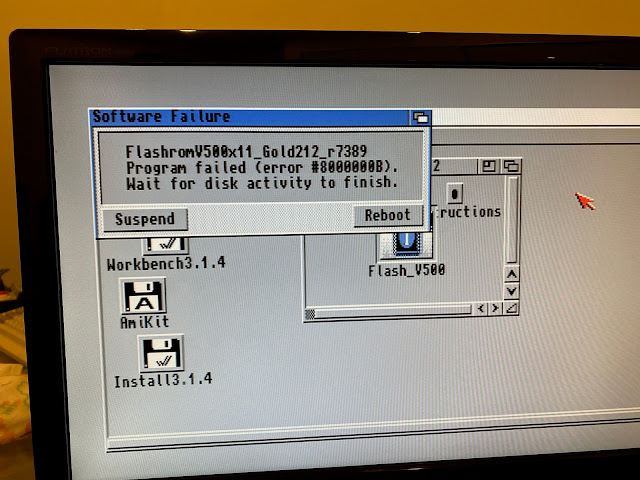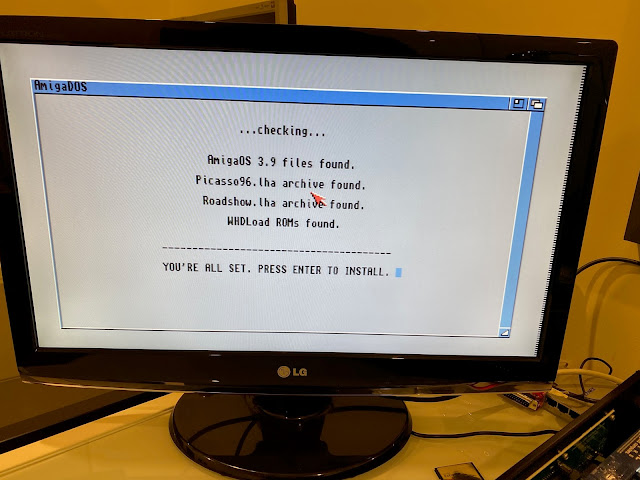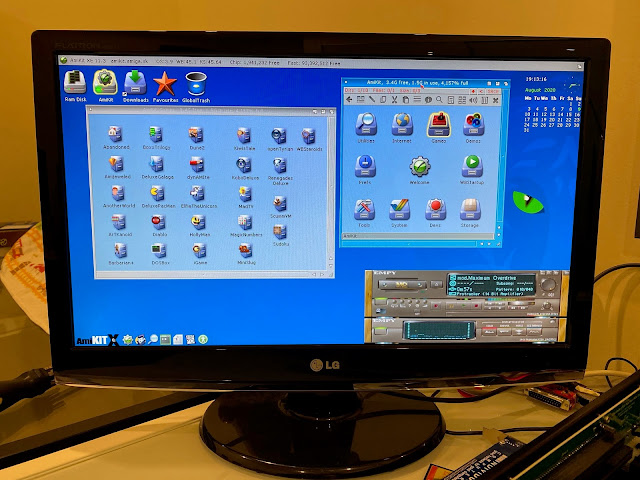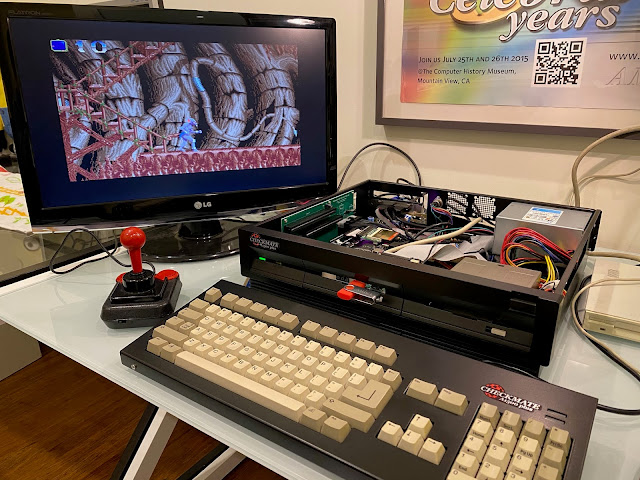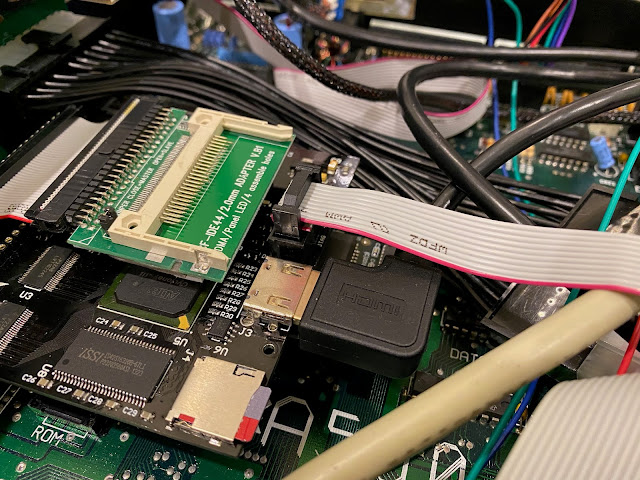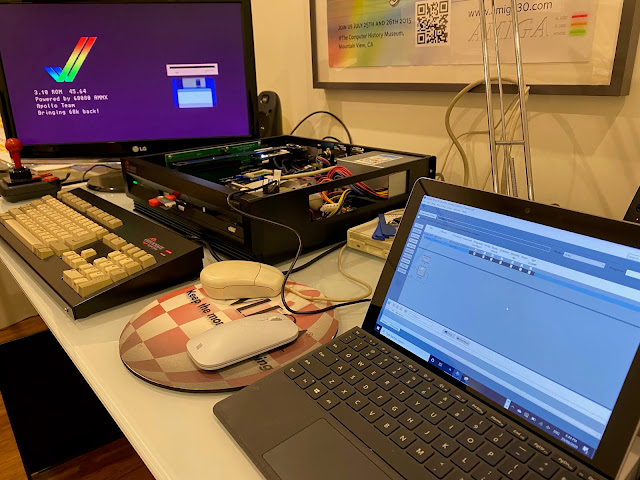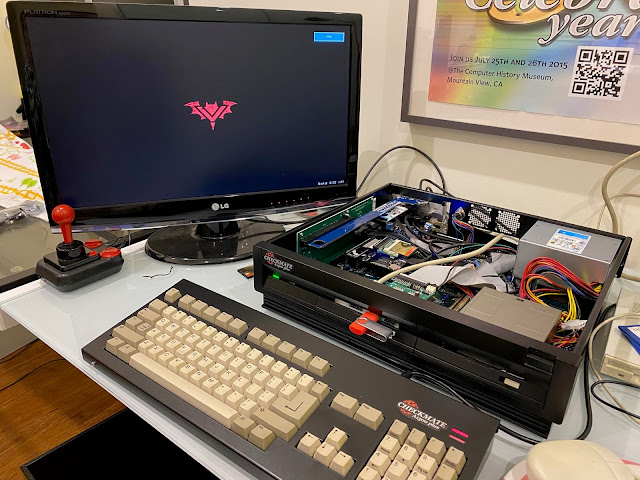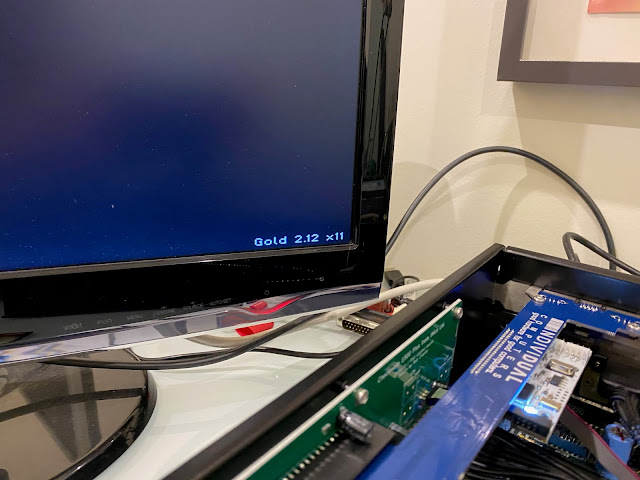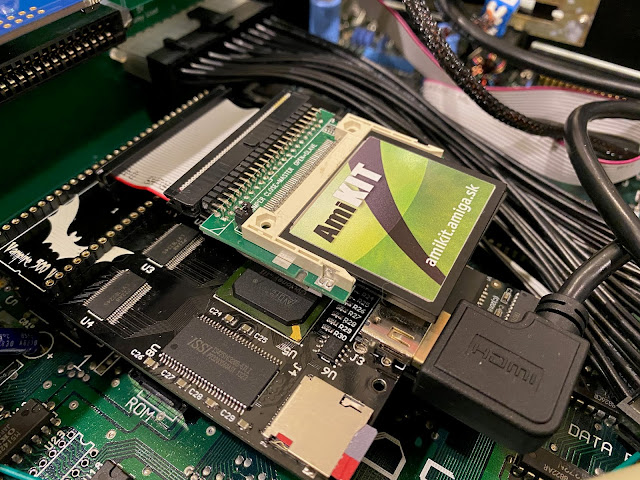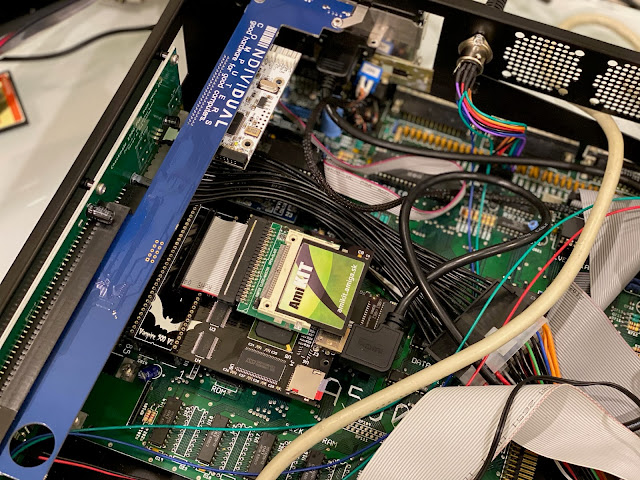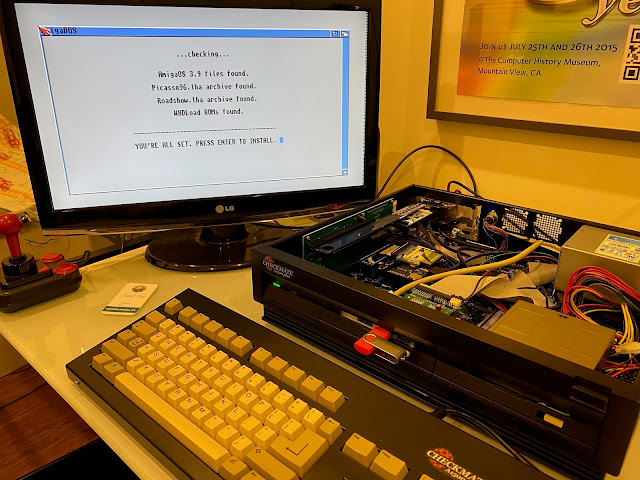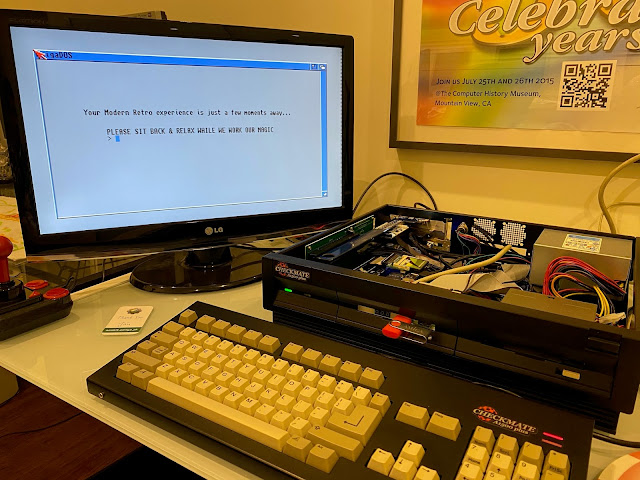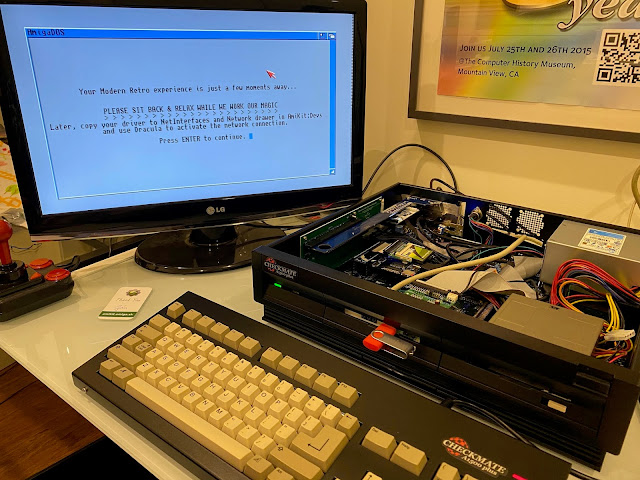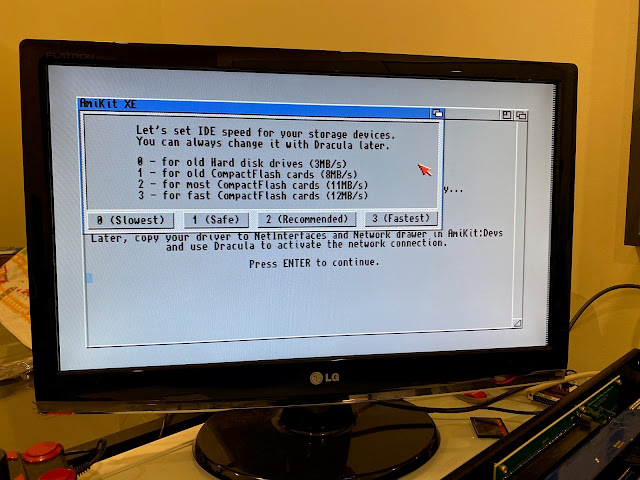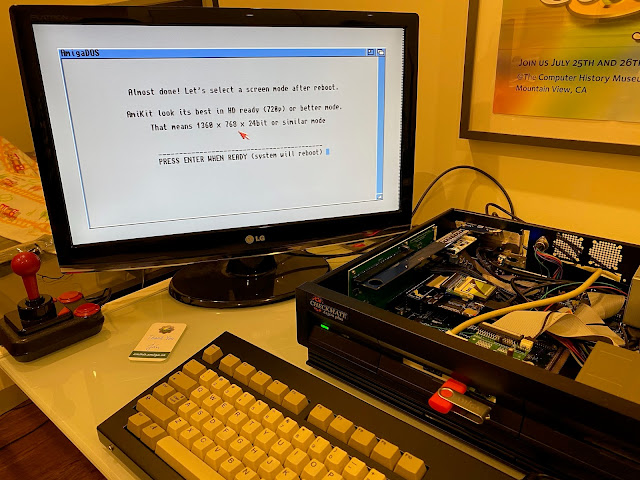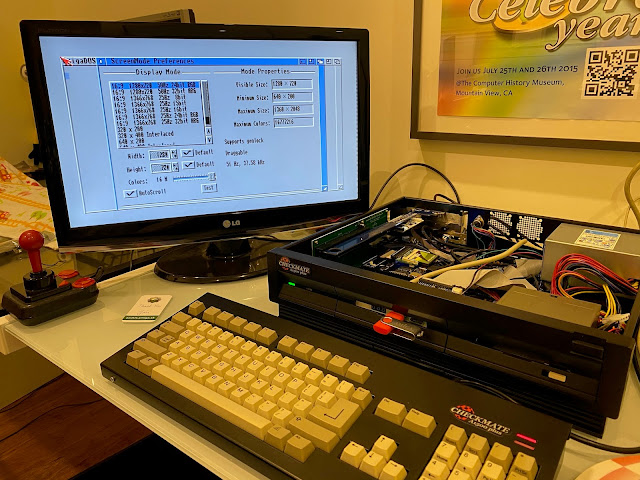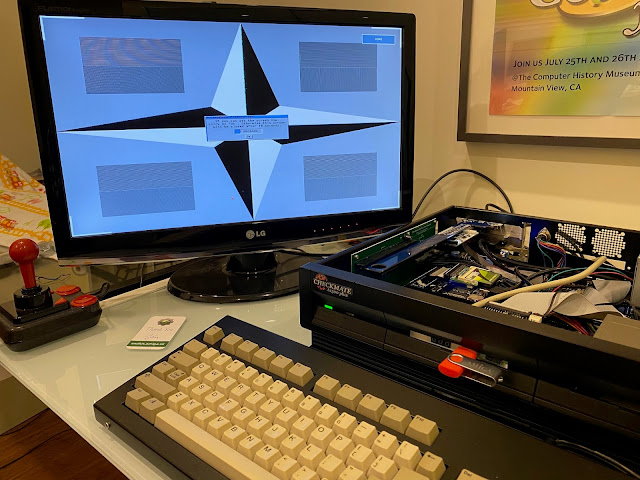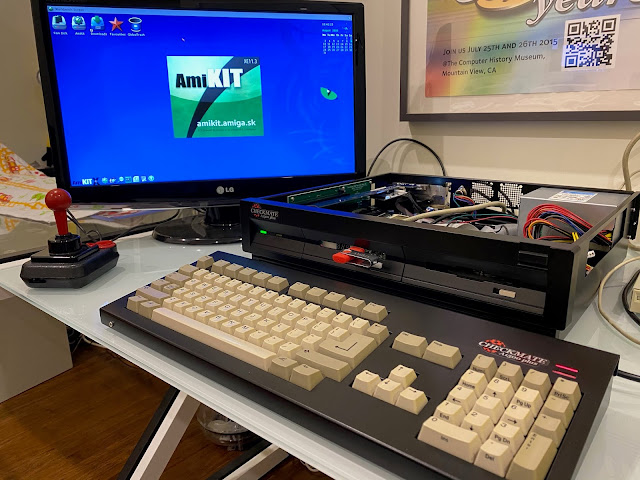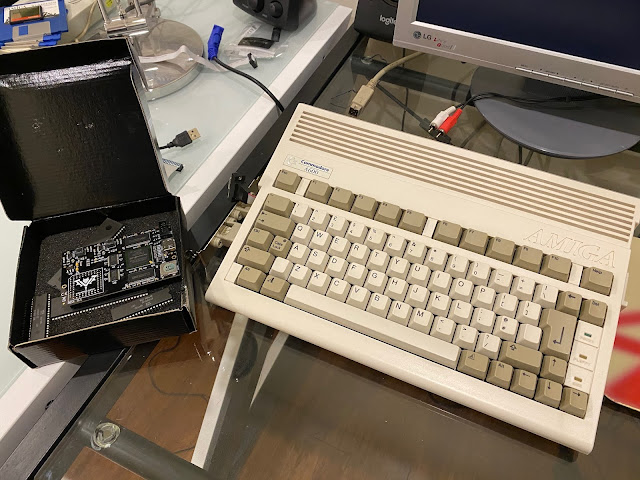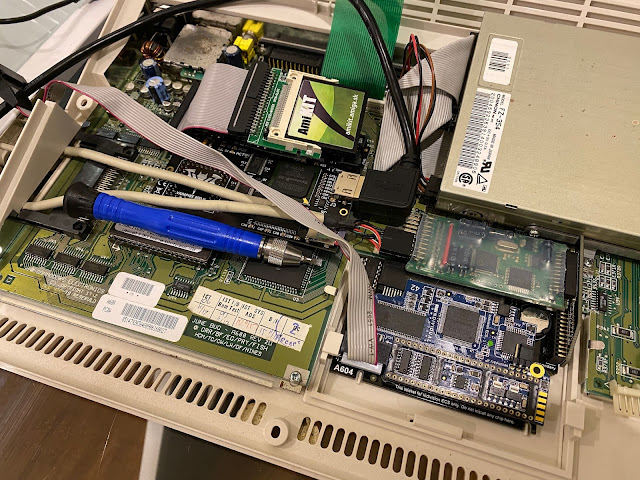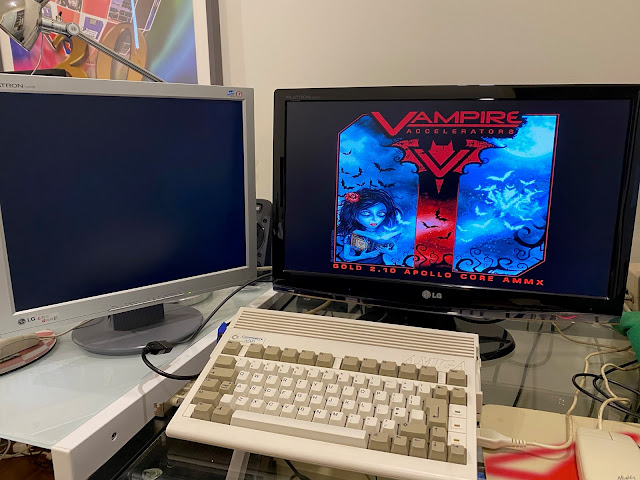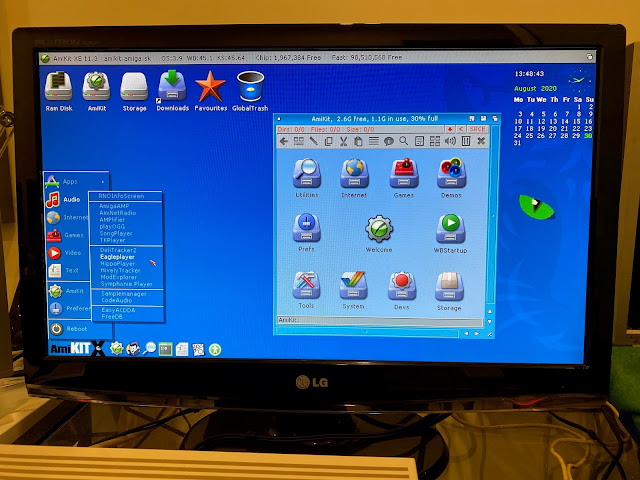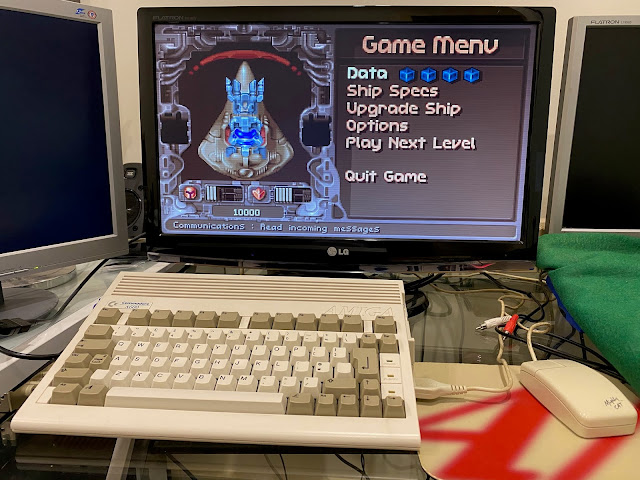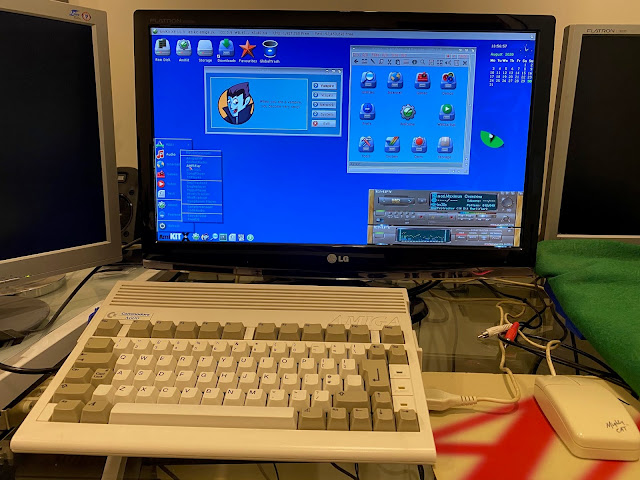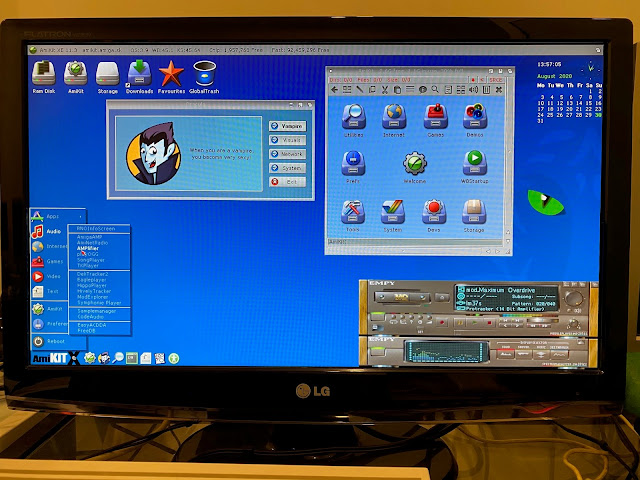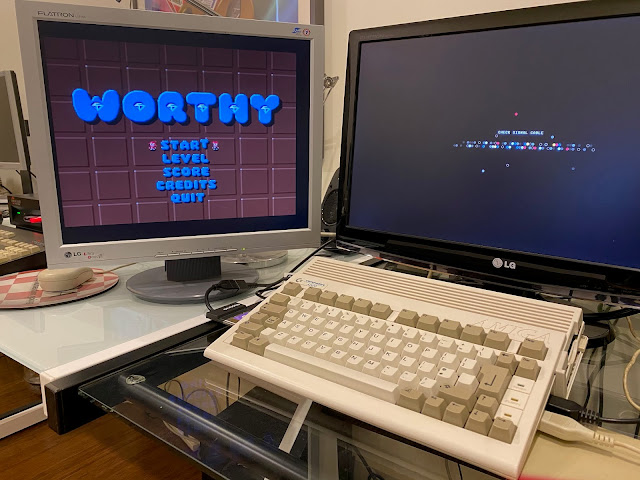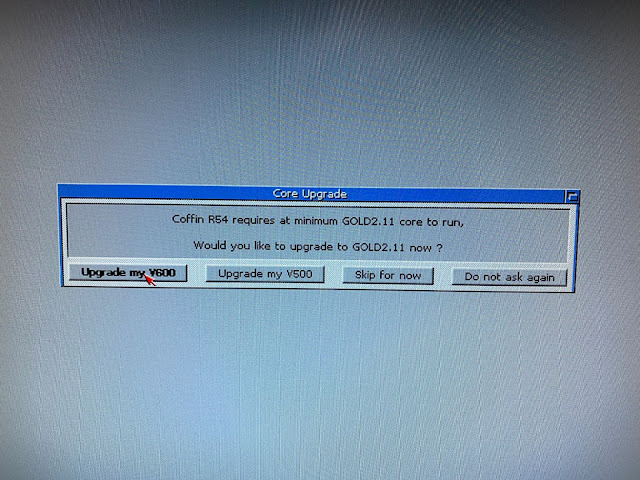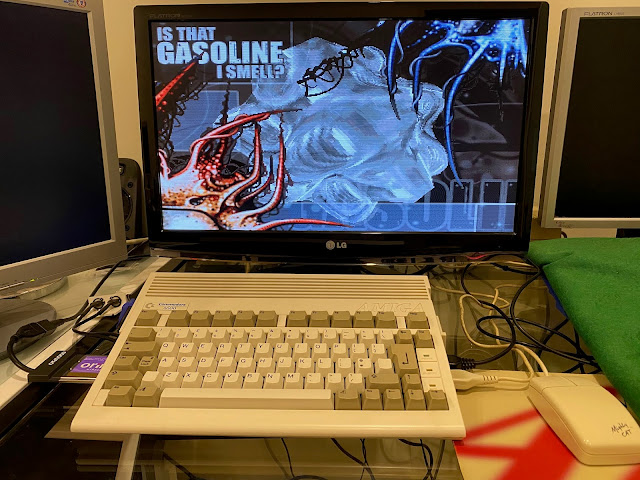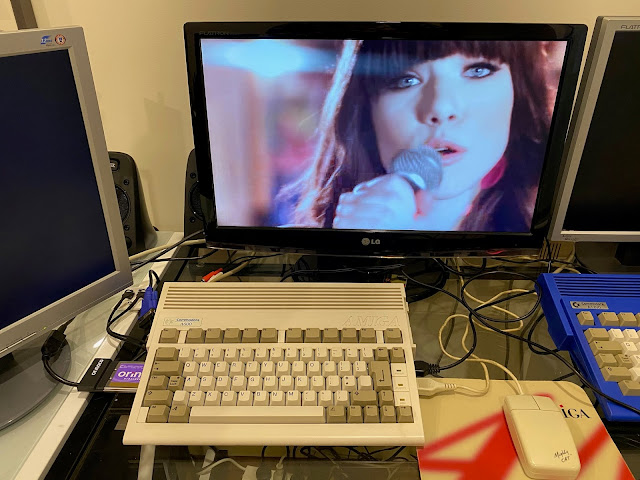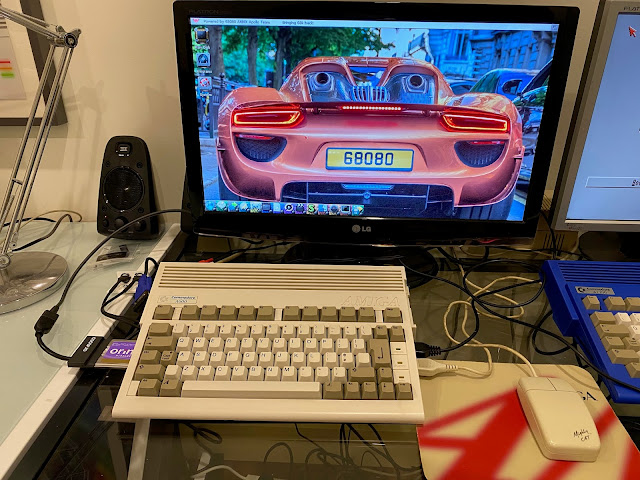A Tale of Two Vampires
Sorry for the delay in blog posts, but today I try to make up for it as I bring you a tale of two Vampires, featuring AmiKit XE. And even a bit of Gotek to boot. This work was carried out throughout the whole of August.

Trouble is the old style digit display. These days the Gotek come with fancy OLED displays to show the name of the floppy disk image and other goodies. I was keen to try it and bought one before COVID-19 started, with the intention of swapping the Gotek in the Checkmate A1500 plus case the next time I did any work in it.
I then started the task of disassembling the Checkmate A1500 plus case to replace the Gotek drive with the new one:
I screwed it in and here is the comparison. Note I picked a black 3d printed mounting bay for the new one so it would look better in my black case.
Putting the expansion bay back into the case, I checked the alignment of the new Gotek to the drive bay hole. The news wasn't good:
This means the 3D print drive mount is probably intended for an A600 or A1200, rather than a A500 floppy drive mounting. That is a shame, as it means I couldn't use it. I put the old one back in for now. That was a bust!
I originally tried prepping a 32GB CF card (with USB to CF converter) using HDToolbox on my Amiga 4000D. I set it as per the instructions, using PFS3 as the file system.
I then downloaded the lzx archive needed to extract the archive to the CF card, and installed it on my Amiga 4000D.
I then started extracting the archive to the CF card partition (connected using USB to CF converter).

I thought I would copy the archive to the CF card first, then extract on the actual CF card. Previously I was extracting from the Amiga 4000D data partition to the CF card.
I gave up and connected the CF card directly to the IDE interface on the Amiga 4000D. Then it copied successfully. The moral of the story extracting a large number of files over USB is a game of lottery of whether it works or not.
Anyway, with the extraction of files done to the CF card, I then made sure I had all the files needed for the initial install, as per the installation guide.
After a reboot it told me I needed to upgrade my Vampire Core version to 2.12. Currently I was running 2.11 Core.
So I downloaded the required AmigaOS updatable 2.12 core files to try to upgrade the Vampire Core before trying the install again. The upgrade is not included with the AmiKit XE setup. Here is the drawer from the archive I download from the Apollo website, ready to run the installer.
I tried a number of times but it gave me the same error every time. I previously upgraded the core from 2.10 to 2.11 without a problem on the Amiga, so I have no idea why this upgrade doesn't work.
With the install completed, it rebooted into a wonderful AmiKit XE customised RTG Workbench, and looks very beautiful.
Having used this version under emulation, I can say in my brief play with it that it works just as well.
However, being me, I wasn't content to leave it like this. The main reason is because although the system worked, the screen display was patchy at 720p output. I need to set a lower screen resolution in order to have a stable display. It is believed the issue was the firmware installed, and that I really did need to install the 2.12 core, which is the minimum required for AmiKit XE.
I removed the CF card to prevent issues while flashing the Vampire 500. I needed a Windows PC or Linux machine for the next step, as I needed to download the Intel FPGA Quartus programmers toolkit. I am grateful to the Apollo Vampire Wiki for the instructions on what is needed here, as I have never flashed a FPGA core via a USB blaster before.
The not documented trick to get it working is to locate the inf file for the USB Blaster driver, helpfully installed in an obscure folder as part of of the Intel Quartus FPGA programmer tool installation:
Right clicked on the usbblstr.inf and select install. After that, the Device was picked up correctly. Isn't Windows wonderful...
Ok, ready to load the 2.12 core. I chose the slowest x11 core as the Vampire 500V2 is not so fast and that is supposed to be the most compatible core.
Just to remind ourselves, all I wanted to do was get the core updated. I had to waste a bunch of time learning about fpga reprogrammers, setups and more just to do that. This is not something the average Amiga fan would ever do....only crazy Amiga fans like me. And maybe you, since you are reading this! :-)
All done and flashed successfully. Why couldn't I use the AmigaOS updater....this is much more difficult.
You can see the new version number here:
But, the problems with the 720p screen resolution persisted and now the system was unstable too, failing to boot to workbench every 3 out of 4 times.
I backed it up to an image file using my Windows PC, copied the required install files into the dedicated FAT partition on the CF card on my PC also, and then installed it into my Vampire 500V2, ready for installation to begin. The Fat partition make this process much easier than creating the CF card yourself. I recommend getting the CF card version for a very easy setup process:
I was working live with the developer via Slack to do this installation to make sure it went well. I am so grateful for the assistance and the support was very very welcome.
Here is the Vampire 600 installed in the system. I am using a Amiga converted PC ATX PSU from Amigakit to supply more power as I know all these expansion in the A600 need a beefier PSU than the standard one in order to work properly.
This Vampire has been out of use for a long time, so it is still running the 2.10 gold core. Much older than the 2.11 core in the V500.
But, it worked perfectly out of the box with AmiKit XE. I mean, perfectly! everything works, the remapping works, the 720p output works, no lockups.
I was happily listening to mods and feeling good about all things Vampire. I fired up Worthy for some more recent gaming fun.
I then decided I really should update my Vampire core from 2.10 to the 2.11 core being recommended. So I did that:
All went well with that, and I was soon back on the AmiKit XE desktop, running 060 demos on my Amiga 600 and enjoying the full power of the Vampire:
I then thought I should fix up the IDE CF card on the A600 which was using the ribbon cable that meant it was sitting over the A600 Vampire card, causing the IDE cable, CF card and the Vampire to get very hot. I had a converter that allows the CF card to be positioned over the PCMCIA slot, away from the Vampire. So I opened the case for one last time to do this change.










